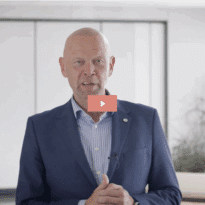Truly resilient businesses beyond the pandemic need to be getting the most out of technology investments, by ensuring they have the right end-to-end processes, KPIs and measurement capabilities, as well as communications in place, says Mark Barlow, CEO at AppLearn.
2020 has been a year of immense change for organisations across the globe. Step back to January, and businesses could never have envisaged just how quickly their digital transformation plans would have to accelerate – particularly remote working strategies (if these even existed).
Now, we’re living in a world where most, if not all, organisations are able to support multiple, global teams successfully, and from anywhere. This is largely thanks to the collaboration tools that enable greater communication across businesses, and the cloud-based applications that allow workers to access what they need to carry out their day-to-day duties.
But how can organisations maintain this level of agility? And how can they ensure that their technology investments are being made in the right places?
It all comes down to resilience.
Resilience may not be typically linked to business software and digital adoption, but if 2020 has taught us anything, it’s that technology is crucial in securing a business’ future. It has carried organisations across the globe through one of the most difficult economic times experienced in decades.
But this next period is absolutely critical. To be truly resilient beyond the pandemic means getting the most out of technology investments, and organisations can do this by ensuring they have the right end-to-end processes, KPIs and measurement capabilities, as well as communications in place.
Prioritise the end-to-end flow
There is a hope that one day there will be a panacea, one single app that serves a business’ every need, but the likelihood is this won’t happen – certainly not in the near future.
In the meantime, we are seeing more and more businesses complicating their IT estates with application after application. In fact, the average employee uses over 35 applications for their day-to-day work (1) and interacts with these platforms over 1,000 times a day. While switching between applications may seem like fleeting interruptions, the immediate and longer-term implications on productivity couldn’t be clearer. Those seconds of lost time soon stack up, especially for an enterprise workforce.
It’s also no secret that organisations who use more applications struggle to monitor how employees are interacting with them, as well as being able to offer suitable support. Recent analysis carried out by AppLearn (2) found that many organisations find it difficult to measure how well their employees engage with cloud-based applications. This level of difficulty increased with the number of applications deployed across their organisation.
To prevent this, businesses need to take a long hard look at their current operational processes and structures to identify where large IT estates may be inhibiting business productivity and growth. With just a little thought, inefficient processes can soon be turned into end-to-end success.
Don’t mistake usage for value
As the wider climate remains uncertain and budgets remain under constant review, being able to prove the value of technology investments will become even more crucial.
Before going any further, it’s important not to mistake usage for value. The ability to measure success of software investments is directly tied to having the right key performance indicators (KPIs) in place. If businesses don’t know what they need to measure, how will they ever be able to prove if the technologies they’re implementing are making a tangible difference?
KPIs need to be linked to long-term business outcomes such as productivity, cost-savings and IT support ticket reduction. These should then be measured regularly throughout the adoption process – not just six months or a year after implementing a piece of software.
Monitoring the company-wide user experience of a technology gives business leaders the insight needed to know what is and isn’t helping achieve the desired business outcomes. This could, for example, include identifying which tasks users are spending more time on, then honing in on the reason this is happening, intervening accordingly and measuring the outcome.
Without meaningful measurement, this simply isn’t possible, and your resilience comes into question. It’s a challenge that’s only amplified in process cycles involving multiple applications, but measuring and managing these journeys is business-critical.
Communicate, communicate, communicate
The bedrock of successful digital adoption is communication. It may seem simple, but many organisations forget how important it is to provide clear guidance on technological change and ensure buy-in across a business.
In fact, true digital adoption cannot be achieved without creating a culture that is willing to embrace digital change. Users need to understand the purpose of the technology and what benefits it will provide to them from the offset. Without this, businesses will struggle to ever know if their technology investments are really paying off.
As with measurement, this communication needs to happen throughout the adoption process – not just at the roll-out stage. Empowering employees with the rationale, knowledge and tools needed to carry out day-to-day tasks effectively is the only way to achieve real change.
Why does this all matter?
It matters simply because we cannot be complacent in today’s world – especially as we continue to navigate the global pandemic. Resilience is key, and a driver of this is the technology we use. It has carried us forward, giving us the tools we needed to work in a way we never thought were possible, but now it’s time to take the next step to not just achieve digital transformation, but also long-term digital adoption.
(1) TechRepublic article: Employees switch apps more than 1100 times a day decreasing productivity
(2) Applearn: Digital Adoption Pulse Report 2020




































